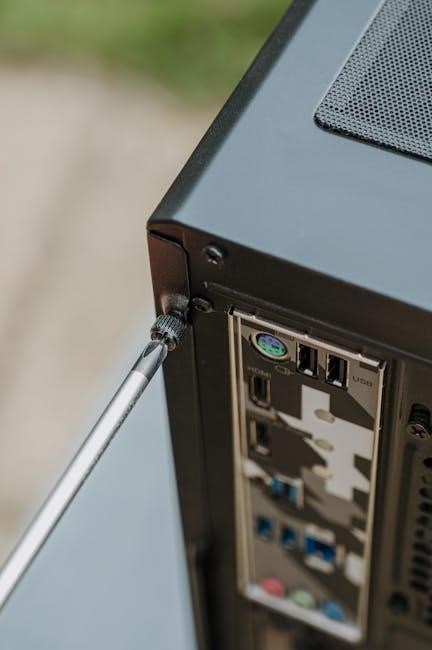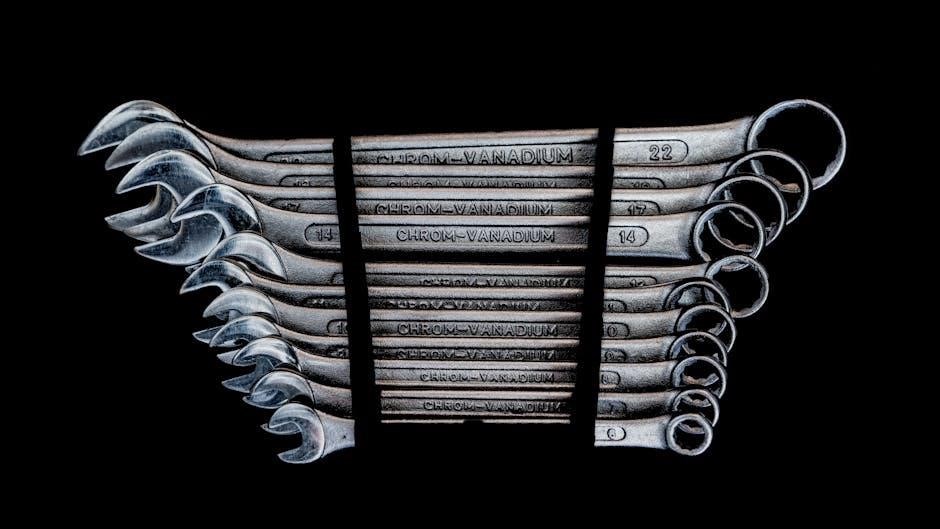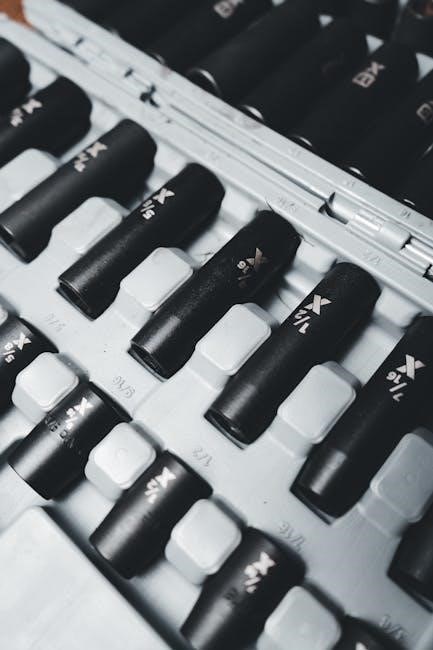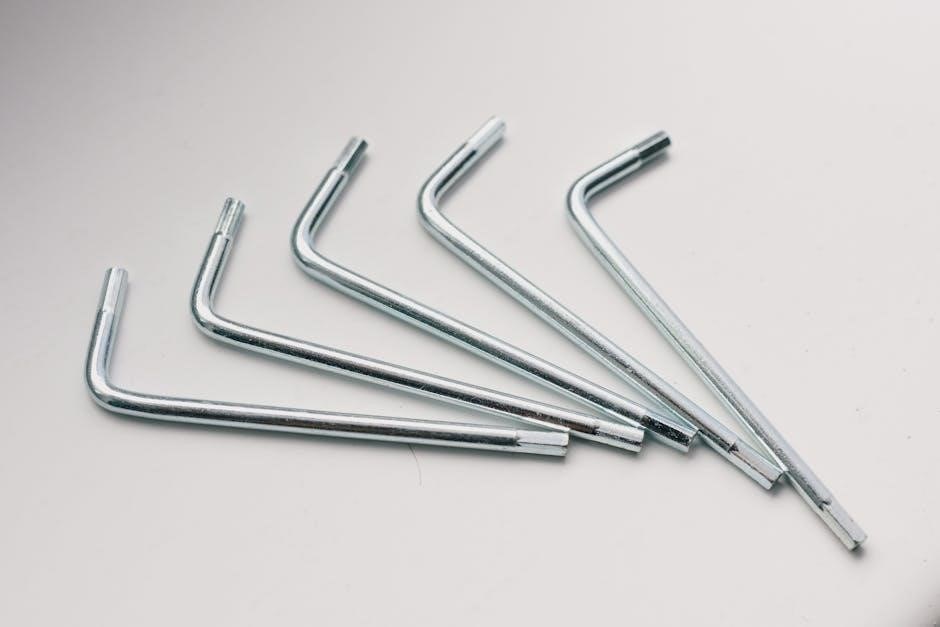
Denture repair kits provide a cost-effective solution for fixing minor damages‚ such as cracks or loose teeth‚ at home. These kits include repair resin‚ an applicator‚ and instructions for easy‚ DIY fixes‚ saving time and money compared to professional dental services. While they offer a convenient temporary solution‚ more severe issues may still require professional attention.
What is a Denture Repair Kit?
A denture repair kit is a DIY solution containing materials like repair resin‚ applicators‚ and instructions for fixing minor damages‚ such as cracks‚ chips‚ or loose teeth. These kits are designed to provide a quick‚ cost-effective way to repair dentures at home‚ saving time and money. They are ideal for temporary fixes but may require professional assistance for more severe issues.
Why Use a Denture Repair Kit?
Denture repair kits offer a cost-effective‚ time-saving solution for minor repairs‚ allowing users to fix issues like cracks or loose teeth at home. They provide convenience and avoid the need for immediate professional dental services‚ making them an ideal temporary fix for maintaining dental function and comfort until a dentist can be consulted.

Preparing for the Repair
Preparing for the repair involves gathering necessary materials‚ cleaning the denture thoroughly‚ and preparing the repair resin according to the kit’s instructions.
Cleaning and Drying the Denture
Cleaning and drying the denture is essential before repair. Use mild soap and warm water to scrub the denture‚ ensuring all surfaces are free from debris. Rinse thoroughly and pat dry with a soft cloth. Allow the denture to air dry completely to prevent moisture from interfering with the repair resin’s adhesion. Proper preparation ensures a strong and durable bond.
Gathering Materials and Tools
Gather all materials from the repair kit‚ including the repair liquid‚ powder‚ applicator‚ and instructions. Ensure you have additional tools like a bowl‚ spoon‚ gloves‚ and a clean work surface. Having everything ready beforehand streamlines the repair process and prevents delays. Organize the materials neatly to avoid misplacement or contamination during the procedure.

Preparing the Repair Resin
mix the repair liquid and powder according to the instructions‚ using the provided spatula. Work quickly‚ as the resin sets fast‚ ensuring a proper bond.
Mixing the Denture Repair Liquid and Powder
Combine the repair liquid and powder in the proportions specified by the kit. Use the spatula to mix thoroughly until smooth. Work quickly‚ as the resin sets fast. Ensure no lumps remain‚ as they can weaken the repair. Proper mixing is crucial for a strong‚ durable bond. Follow the instructions precisely to achieve optimal results.
Understanding the Setting Time of the Resin
The repair resin typically sets within 5-10 minutes‚ depending on the kit. Hold the pieces firmly in place during this time to ensure proper alignment. Once set‚ the resin hardens completely‚ creating a strong bond. Note that some resins may take longer or require specific conditions for optimal results. Always follow the kit’s instructions for timing to avoid repair failure.

Applying the Repair Resin
Use the applicator to apply a small amount of mixed resin to the damaged area. Ensure proper alignment of the broken pieces before applying the resin precisely.
Aligning the Broken Pieces Properly
Properly aligning the broken pieces is crucial for a successful repair. Press the pieces together firmly‚ ensuring they fit perfectly without any gaps. Hold the pieces in place for a few minutes to maintain alignment while applying the resin. This step ensures the repair is strong and functional‚ preventing further damage or misalignment.
Using the Applicator for Precise Application
Using the applicator provided in the kit ensures precise application of the repair resin. Dip the applicator in the mixed resin and carefully apply a small amount to the broken area. This method prevents excess resin from spreading to unwanted areas‚ allowing for a neat and professional-looking repair. Follow the kit instructions for the correct technique.
Allowing the Resin to Set
Allow the resin to set for 5-10 minutes to ensure proper bonding. Hold pieces firmly in place until the resin hardens completely for a secure repair.
The Importance of Holding the Pieces in Place
Holding the broken pieces together ensures proper alignment and a strong bond. Misalignment can lead to a weak repair‚ causing further damage or breakage. Keep the pieces firmly pressed together during the setting time to ensure the resin adheres correctly and creates a durable fix. This step is crucial for a successful and long-lasting repair.
Waiting for the Resin to Harden Completely
Allow the resin to harden completely‚ typically 5–10 minutes at room temperature. Avoid rushing this step‚ as improper hardening can weaken the repair. Once set‚ the resin should feel hard and durable. Ensure the repair is fully hardened before using the denture to prevent further damage or breakage.

Trimming Excess Material
Using Sandpaper or a File for Smoothing
Use sandpaper or a file to smooth rough edges‚ ensuring a proper fit and comfort. Avoid using harsh materials that could damage the denture further. Ensure the surface is even and test the denture after smoothing.
Use fine-grit sandpaper or a small file to gently smooth rough edges or excess resin. Work carefully to avoid damaging the denture. Sand in one direction‚ using light pressure‚ and test the fit periodically. This step ensures comfort and prevents irritation. Always clean the denture after smoothing to remove any dust or debris; Avoid using coarse materials that could scratch the surface.
Removing Excess Resin from the Denture Surface
After the resin has hardened‚ use a small‚ flat tool or a plastic scraper to gently remove excess material. Avoid using sharp or metal tools‚ as they may scratch the denture. Carefully scrape away any overflow‚ ensuring the surface is smooth and even. Clean the denture thoroughly with warm water and a soft brush to remove any remaining residue.

Reattaching Loose Teeth
To reattach a loose tooth‚ apply a small amount of repair resin to the tooth’s base. Align it properly with the denture and hold firmly. Let it set for the recommended time.
Applying a Small Amount of Resin to the Tooth
Using the applicator‚ apply a small amount of mixed repair resin to the base of the loose tooth. Gently press the tooth into its original position‚ ensuring proper alignment; Hold firmly for 2-3 minutes to secure it. Avoid excess resin‚ as it can be smoothed later. Allow the resin to set completely before using the denture.
Securing the Tooth in Place
Hold the tooth firmly in its correct position for 5 minutes to ensure proper bonding. Use a rubber grip or cloth for better control. Allow the resin to set completely‚ following the kit’s instructions‚ typically 30 minutes. Avoid using hot water or harsh chemicals‚ as this can weaken the bond. Ensure the tooth is secure before using the denture for eating or speaking.

Caring for the Repaired Denture
Proper care ensures longevity. Clean with mild soap and water‚ avoiding harsh chemicals. Rinse thoroughly and store in a protective case when not in use.
Cleaning the Denture After Repair
Clean the repaired denture with mild soap and warm water to remove residue. Avoid harsh chemicals or abrasive materials that could damage the repair. Gently scrub all surfaces‚ paying attention to crevices where bacteria may accumulate. Rinse thoroughly to ensure no soap remains. Regular cleaning maintains hygiene and prevents damage to the repaired areas‚ ensuring optimal functionality and comfort.
Avoiding Hot Water and Harsh Chemicals
Avoid using hot water or harsh chemicals‚ as they can weaken the repair or damage the denture material. Stick to mild soap and warm water for cleaning. This prevents loosening the repair resin and ensures the denture remains stable. Harsh chemicals can degrade the acrylic‚ while hot water may soften the repair‚ leading to further issues. Gentle care extends the life of your repaired denture.

Safety and Warnings
Improper repair techniques can cause gum irritation or discomfort. Always follow instructions carefully to avoid damaging the denture or causing harm. Temporary fixes may not last long.
Possible Risks of Improper Repair
Improper repair techniques can lead to gum irritation‚ discomfort‚ or poorly fitting dentures. Misaligned pieces may cause difficulty eating or result in mouth sores. While home repair kits are convenient‚ they are intended for temporary fixes. Using improper methods or materials can cause further damage or require more extensive dental work‚ highlighting the importance of following instructions carefully.
Importance of Following Instructions Carefully
Adhering to the instructions ensures a proper repair‚ preventing further damage or discomfort. Incorrect mixing or application of resin can lead to weak bonds or misalignment. Following guidelines helps achieve a durable fix‚ maintaining comfort and functionality. Deviating from instructions risks an ineffective repair‚ potentially causing more harm than good or necessitating professional intervention.
Denture repair kits provide a convenient solution for minor fixes‚ saving time and money. However‚ complex issues may still require professional assistance. Use them wisely for the best results.
Final Tips for Successful Denture Repair
- Always clean and dry the denture thoroughly before applying repair resin.
- Ensure proper alignment of broken pieces for a secure bond.
- Use the applicator for precise resin application to avoid excess.
- Allow the resin to set completely as per instructions for durability.
- Trim excess material carefully with sandpaper or a file.
- Avoid using hot water or harsh chemicals post-repair.
By following these tips‚ you can achieve a successful repair and extend the life of your dentures.
When to Seek Professional Dental Assistance
If your denture has major breaks‚ multiple repairs‚ or poor fit‚ consult a dental professional. DIY kits are temporary fixes and may not last long. Improper repairs can cause gum irritation or discomfort. For permanent solutions‚ seek expert help to ensure proper fit and functionality‚ avoiding further damage or complications.